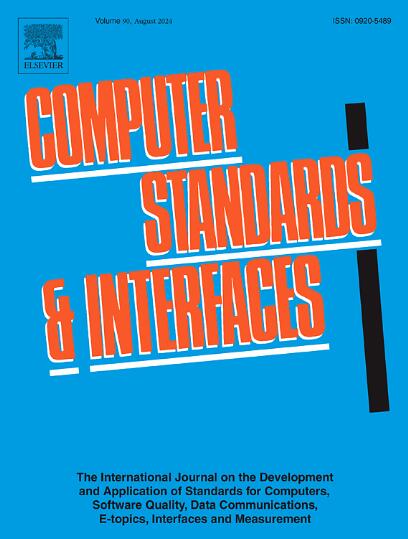An efficient rejection-free threshold ring signature from lattices and its application in receipt-free cloud e-voting
IF 3.1
2区 计算机科学
Q1 COMPUTER SCIENCE, HARDWARE & ARCHITECTURE
引用次数: 0
Abstract
The threshold ring signature is a generalization of the ring signature. It confirms that -out-of- members are signing anonymously in a set of users, and thus it can be well applied to e-voting. In this paper, we present a more efficient lattice-based threshold ring signature, using Lagrange polynomial interpolation to express the threshold. The scheme eliminates the dependence on Stern-like identification protocols with large soundness error, and achieves much shorter signature sizes. It also uses the technique of Gaussian convolution (G+G) proposed by Devevey et al. in Asiacrypt 2023 to remove the rejection sampling in BLISS signature. Compared with previous distributed FSwA (Fiat-Shamir with Aborts) signatures where the number of repetitions increases exponentially with that of signers, our scheme has much higher computation efficiency. We prove the unforgeability and strong anonymity, i.e., fellow-signer anonymity, unclaimability and anonymity against the untrusted leader of our proposed threshold ring signature scheme. Leveraging the security and efficiency advantages of our signature scheme, we propose a post-quantum receipt-free and verifiable e-voting protocol for large-scale elections with untrusted cloud servers.
一种有效的栅格无拒绝阈值环签名及其在无收据云电子投票中的应用
阈值环签名是对环签名的一种推广。它确认了N个用户中有t / N个成员是匿名签名的,因此可以很好地应用于电子投票。在本文中,我们提出了一种更有效的基于格子的阈值环签名,使用拉格朗日多项式插值来表示阈值。该方案消除了对具有较大可靠性误差的类斯特恩识别协议的依赖,实现了更短的签名大小。它还使用Devevey等人在Asiacrypt 2023中提出的高斯卷积(G+G)技术来去除BLISS签名中的拒绝采样。先前的分布式FSwA (Fiat-Shamir with Aborts)签名的重复次数随着签名者的数量呈指数增长,与之相比,我们的方案具有更高的计算效率。我们对所提出的阈值环签名方案的不可伪造性和强匿名性,即同签名者匿名性、不可声明性和不可信领导者匿名性进行了证明。利用签名方案的安全性和效率优势,我们提出了一种后量子无收据和可验证的电子投票协议,用于不受信任的云服务器的大规模选举。
本文章由计算机程序翻译,如有差异,请以英文原文为准。
求助全文
约1分钟内获得全文
求助全文
来源期刊

Computer Standards & Interfaces
工程技术-计算机:软件工程
CiteScore
11.90
自引率
16.00%
发文量
67
审稿时长
6 months
期刊介绍:
The quality of software, well-defined interfaces (hardware and software), the process of digitalisation, and accepted standards in these fields are essential for building and exploiting complex computing, communication, multimedia and measuring systems. Standards can simplify the design and construction of individual hardware and software components and help to ensure satisfactory interworking.
Computer Standards & Interfaces is an international journal dealing specifically with these topics.
The journal
• Provides information about activities and progress on the definition of computer standards, software quality, interfaces and methods, at national, European and international levels
• Publishes critical comments on standards and standards activities
• Disseminates user''s experiences and case studies in the application and exploitation of established or emerging standards, interfaces and methods
• Offers a forum for discussion on actual projects, standards, interfaces and methods by recognised experts
• Stimulates relevant research by providing a specialised refereed medium.
 求助内容:
求助内容: 应助结果提醒方式:
应助结果提醒方式:


